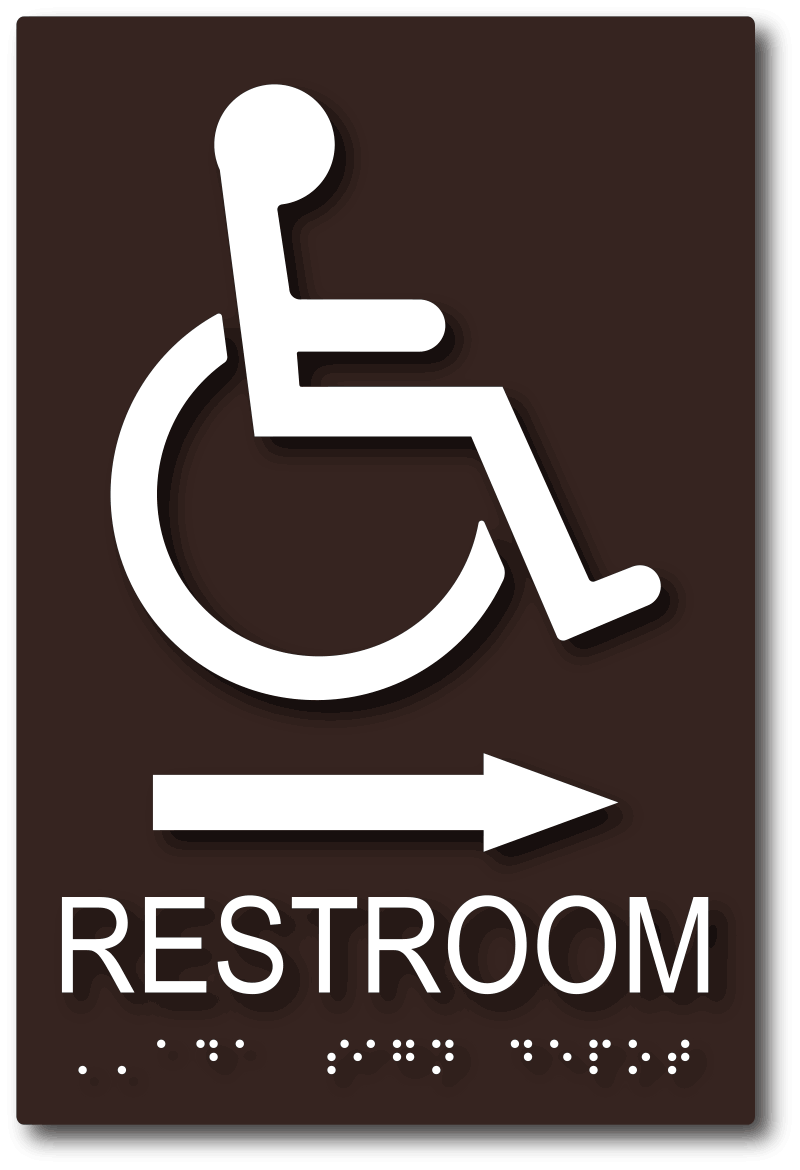ADA Signs: Crucial Tools for Inclusive Settings
Comprehending the Value of ADA Signage for Inclusive Settings
In a significantly varied culture, the value of ADA signage can not be overemphasized. By incorporating attributes like high-contrast visuals and tactile characters, ADA signage plays an essential duty in making sure equivalent gain access to for individuals with impairments.
The Role of ADA Signs
ADA signage plays a critical role in guaranteeing accessibility and inclusivity in exclusive and public rooms. These indicators are essential in assisting people with specials needs, supplying them with the needed info to browse environments separately and securely. The Americans with Disabilities Act (ADA) sets forth certain standards for signs to guarantee that individuals with visual, auditory, or cognitive problems can access the same information as those without such challenges.
The function of ADA signage extends beyond simple conformity with legal demands; it personifies a dedication to equal rights and non-discrimination. By applying ADA-compliant indicators, organizations and companies show their devotion to creating settings where every person, no matter their physical capacities, can participate completely and just as. This is particularly essential in rooms like hospitals, instructional organizations, and government structures, where ease of access can straight impact an individual's wellness and capability to gain access to important solutions.
In addition, ADA signage adds to the total user experience by lowering confusion and boosting wayfinding for all people. Clear, strategically put signage aids in taking care of foot traffic, lowering blockage, and boosting safety. Basically, ADA signs is a foundation of comprehensive layout, assisting in an atmosphere where all individuals can browse and communicate with their environments efficiently.
Secret Components of ADA Signs
Effective interaction goes to the heart of ADA signs, which integrates numerous essential components to ensure accessibility for individuals with handicaps. One of the primary aspects is making use of tactile characters, such as Braille and raised letters, which allow individuals with aesthetic impairments to read the indicators via touch. The Braille must be Grade 2 and placed directly listed below the equivalent text.

One more vital part is the placing location and elevation of the indicators. ADA guidelines specify that indications need to be installed at a height that is available to all users, normally in between 48 and 60 inches from the floor. This makes certain that they are within reach for individuals in mobility devices or of varying elevations.
Benefits for People and Businesses
While guaranteeing access via ADA signage is a lawful requirement, it likewise supplies substantial benefits for both people and businesses. For people, particularly those with impairments, ADA signage offers crucial ease of access to public spaces. It makes sure that people can navigate through buildings and facilities effortlessly and freedom, improving their general experience by decreasing obstacles that can hinder their participation in different tasks. This inclusivity fosters a feeling of belonging and dignity for everybody, enhancing the importance of fair access to solutions and chances.
For organizations, the implementation of ADA signs can result in enhanced client satisfaction and commitment. By showing a dedication to ease of access, organizations can draw in a broader consumer base, including people with handicaps and their households, that usually seek inclusive important source settings. In addition, ADA compliance can safeguard services from possible lawful obstacles and fines related to non-compliance, protecting their online reputation and financial security.
Moreover, ADA signage can add to a favorable office atmosphere. Staff members with specials needs take advantage of accessible navigation within their workspaces, advertising performance and morale (ADA Signs). Eventually, spending in ADA signs not only meets lawful responsibilities yet also enhances the inclusivity, track record, and operational success of companies
Usual Kinds Of ADA Signage
When going over the numerous types of ADA signage, it is vital to recognize the particular kinds that cater to various access requirements. recommended you read ADA signs is designed to guarantee that people with specials needs can navigate spaces safely and separately.
An additional significant kind of ADA signage is directional indications. These provide clear support to various areas within a facility, making sure that all individuals, including those with movement impairments, can quickly find their method - ADA Signs. They frequently incorporate signs and high-contrast shades to boost visibility and understanding
Informational signs are additionally crucial, offering important details about facilities, such as operating hours and plan standards. On top of that, regulative signs convey required directions, like "No Smoking cigarettes" or "Departure Course," making sure compliance with security methods.
Last but not least, identification indications are made use of to classify areas and spaces, making it less complicated for everybody, no matter capability, to identify specific locations. These indicators usually consist of pictograms to enhance global understanding. Collectively, these usual sorts of ADA signage play an essential duty in developing obtainable and comprehensive environments.

Carrying Out Effective Signs Solutions
Executing reliable signs options requires a strategic approach to guarantee availability and conformity with the ADA criteria. The procedure starts with a detailed analysis of the center to determine the certain signage requires based on the setting's feature, format, and the population it offers. This assessment must include factors to check my source consider for both irreversible and temporary signs, each calling for unique style and positioning approaches.
Signage ought to be made from sturdy products to withstand environmental variables while ensuring high visibility and clarity. The assimilation of Braille and increased personalities should adhere to ADA specs to supply equivalent accessibility.
Consistent testimonial and maintenance of signage make sure continued compliance and performance. Engaging with ease of access specialists during the planning and implementation phases can provide useful understandings, making certain that signage not only meets lawful demands however also improves the inclusivity of the environment.

Conclusion
ADA signs plays an essential role in producing comprehensive settings by making certain conformity with accessibility guidelines and enhancing navigation for all users. By cultivating more secure and much more welcoming areas, ADA signage emphasizes a dedication to inclusivity, ultimately adding to a much more fair society for everybody.
By incorporating functions like tactile personalities and high-contrast visuals, ADA signs plays an essential function in making sure equal gain access to for people with handicaps. The Americans with Disabilities Act (ADA) sets forth particular standards for signs to guarantee that people with aesthetic, acoustic, or cognitive problems can access the same information as those without such obstacles.
Effective interaction is at the heart of ADA signage, which incorporates numerous vital components to make certain accessibility for people with disabilities.While guaranteeing availability with ADA signage is a legal demand, it likewise uses significant benefits for both businesses and individuals. ADA signs is created to make sure that people with disabilities can browse areas securely and separately.